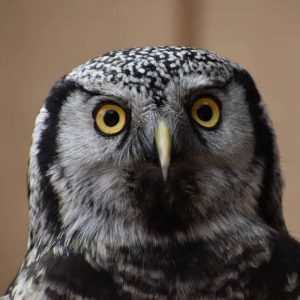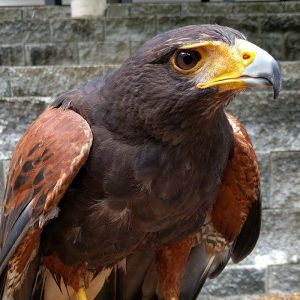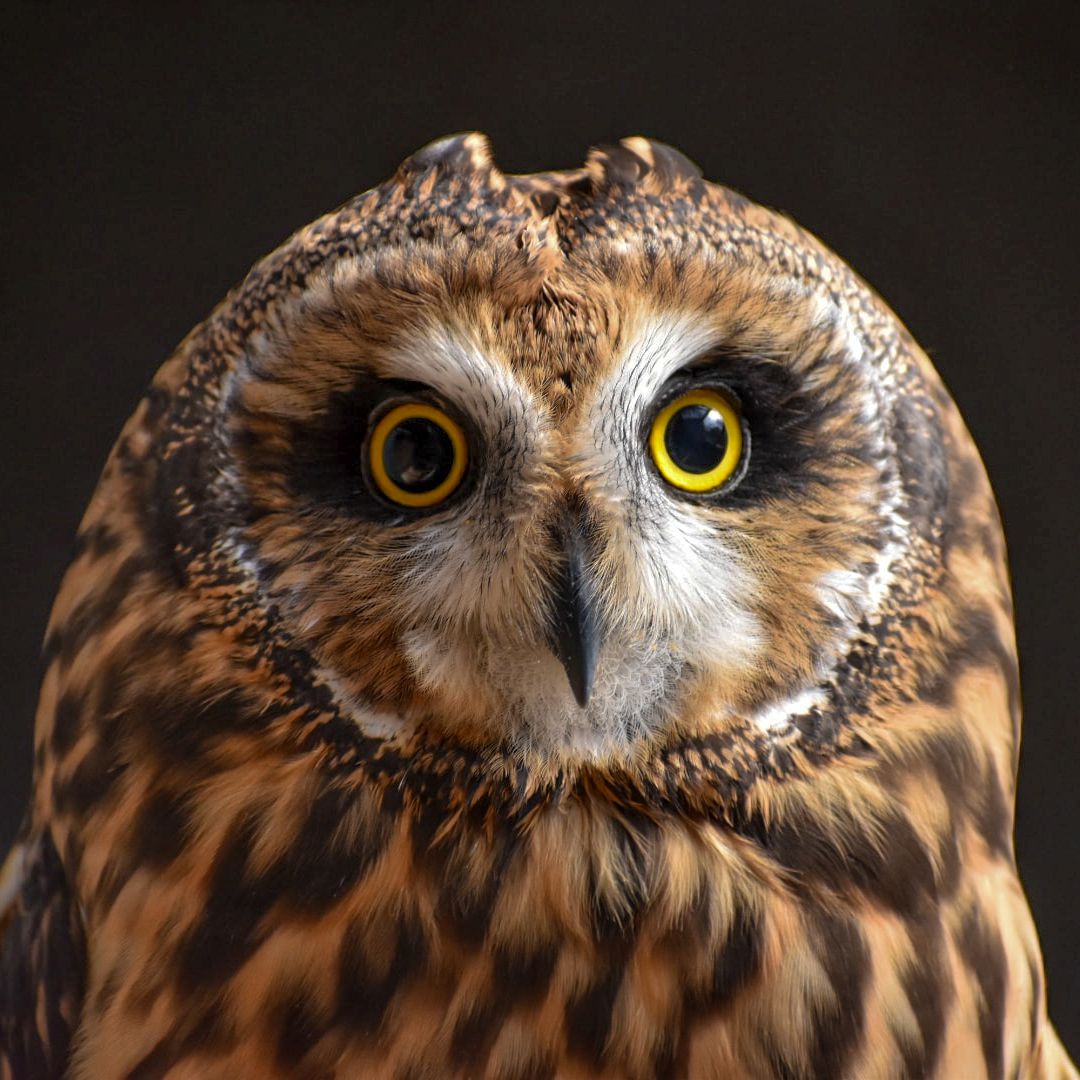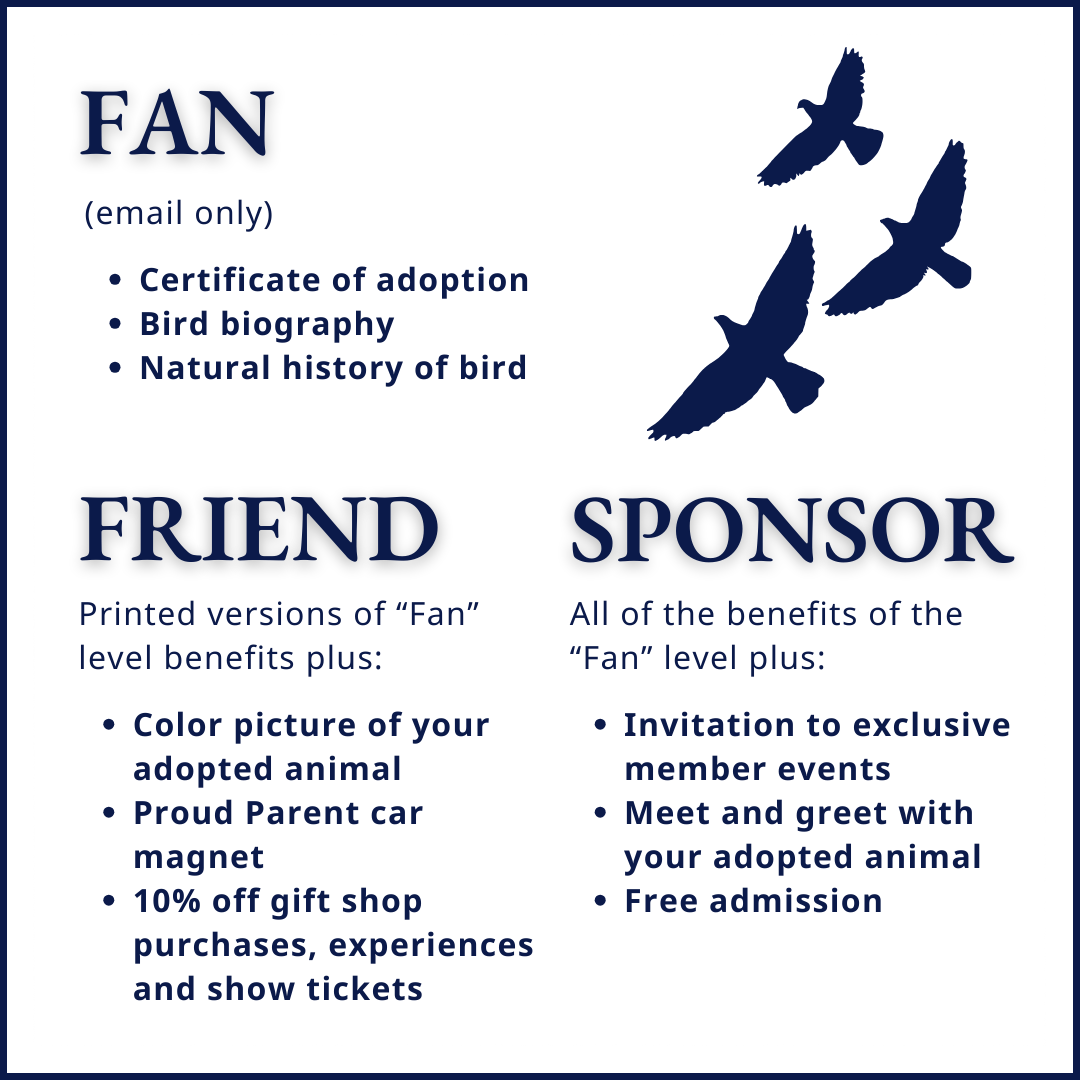Short-Eared Owl – Rose
Rose was admitted to the New Mexican Wildlife Center after being discovered entangled in a barbed wire fence. She was treated by their veterinarian, but sustained permanent damage to her left wing that left her unable to fly. She was transferred to World Bird Sanctuary in 2017 for use as a public exhibit bird.
$29.00 – $129.00
Description
HATCH YEAR: UNKNOWN
FUN FACTS ABOUT ROSE
- Seeing as she was an adult upon her arrival, Rose was very wary of staff when she first came to our facility. However, she has quickly adjusted to her new home and has been doing marvelously in the public view.
- Rose is still pretty shy, like her species typically is, and prefers to people watch from the comfort of her nest box.
- According to her caregivers, when she is sleepy and relaxed her face feathers get all scrunched up, so you can’t really see her facial disk; thus, it’s hard to tell that she is in fact a Short-eared Owl sometimes due to this adorable behavior.
- Rose is housed in one of the enclosures behind our Raptique Gift Shop year-round.
SPECIES FACTS
Scientific Name:
- Asio flammeus.
Distribution:
- Found on all continents except Antarctica and Australia, making it one of the most widely distributed bird species.
- Breeding range is throughout Canada, the United States, Europe, Asia, South America; and the Hawaiian, Galapagos, and Caribbean islands.
Habitat:
- Large open areas with low vegetation like grasslands, prairies, savanna, tundra, marshlands, dunes, and agricultural areas.
Diet:
- Small mammals, rodents, and birds.
Behavior:
- Unlike most owl species that are nocturnal, Short-eared Owls are diurnal and hunt during the daytime.
- Flight pattern is considered “moth-like”, since they tend to fly with stiff wingbeats.
- Short-eared owls like to perch in low branches or on the ground, making them a hard bird to spot out in the wild because they are so secretive.
- One of the few owls that actually makes a nest. The female will line a scrape of dirt with grasses and her downy feathers. Clutch size ranges from anywhere between 1 and 11 eggs.
- Courtship rituals can include the pair locking talons with each other and then tumbling to the ground before letting go. This behavior is also used in territorial defense.
Identification:
- Medium-sized brown and buffy colored owl with lots of banding/streaking. White coloration on face with black eye patches.
- Rounded head with very small feather tufts on top of head that are hard to see unless they are sticking straight up.
- Yellow eyes; short tail with broad, rounded wings.
Additional information
| Adoption Level | Fan, Friend, Sponsor |
|---|
Related products
-

Northern Hawk Owl – Polaris
$29.00 – $129.00 Select options This product has multiple variants. The options may be chosen on the product page -

Harris’s Hawk – Blue
$29.00 – $129.00 Select options This product has multiple variants. The options may be chosen on the product page




